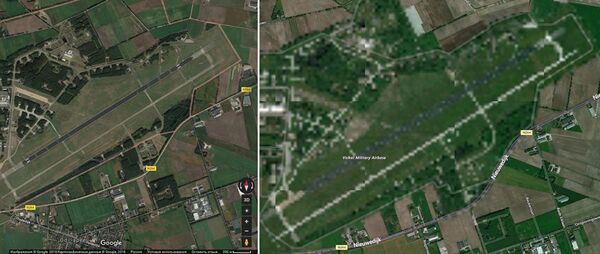Earlier this week, US media began reporting on a new scandal involving the leak of confidential military information. The culprit? Mobile fitness tracking apps used by soldiers in the field which accidentally revealed troop movements, the location of secret bases, black sites, and even underground facilities for the entire world to see.
in #Somalia fitness tracking app shows secret #US military Bases in #Mogadishu airport, #Baido airport, #Kismayo Airport, #Balidogle airport, #Bosaso and even #Berbera in the breakaway region of #Somaliland. pic.twitter.com/2BVOQZNj0t
— Mogadishu Update (@Magdashi3) January 31, 2018
With fitness bracelets and the associated satellite-tracked devices common in the US, Europe, and other wealthy countries, states like Iraq, Syria, Somalia and other countries are another story, with US military personnel often being the only people to use them. Accordingly, when fitness-tracking app maker Strava released a heat map of the activity of its users in November, they accidentally revealed a treasure trove of priceless data on where these troops may be located.
So much cool stuff to be done. Outposts around Mosul (or locals who enjoy running in close circles around their houses): pic.twitter.com/wHItJwYUUI
— Tobias Schneider (@tobiaschneider) January 27, 2018
Groundhog Day
Speaking to Sputnik about the situation, a Pentagon spokesperson stressed that the DoD "takes matters like these very seriously," and was now "reviewing the situation."
Embarrassing as this situation may be, it certainly isn't the first time that the internet has provided foreign intelligence services, secret agencies, and anyone with a stable internet connection, for that matter, with information that a spy would have had to risk life and limb for before the internet age.
In fact, Google Maps has been a headache for the US and its NATO allies for well over a decade now. In 2011, the mapping service accidentally snapped the RQ-170 Sentinel, a top-secret unmanned aerial vehicle developed by Lockheed Martin, on its Satellite view map.
Just last month, bloggers discovered the SR-72, another Lockheed Martin UAV, this one still in the development stage, at a base in Florida, prompting renewed concerns in the Pentagon.
Google Earth Satellite images show a stealth type aircraft in Florida air base which bears a resemblance to the SR-72 which is a top secret hypersonic space craft/jet currently in development for the US military by aircraft manufacturer Lockheed Martin. https://t.co/YP6s9QJYa9 pic.twitter.com/S4lnFC5XZQ
— Robert Tilford (@RobertTilford) January 14, 2018
Left Hand, Meet Right
And while US internet companies do the best they can to comply with US military censorship requests, the existence of multiple mapping services often results in a paradoxical, if not absurd situation where one company, such as Google, will comply with a censorship demand, while another won't.
For instance, while the Volkel airbase in the Netherlands, rumored to be the home to a few dozen American nukes, is given clear, high resolution treatment on Google Maps, the image has been blurred out by Bing.

Don't Say Cheese!
In 2007, with the war in Iraq at its pre-Daesh apogee, the US Army mysteriously lost four AH-64 helicopters in a single day, the choppers were destroyed on the ground by mortar shelling. Five years later, the US Army published a press release admitting that Iraqi insurgents had gotten their hands on the exact coordinates of the US helicopters by looking through geotagged photos taken by US troops online. Ever since, all branches of the military have provided troops deployed in overseas wars with nifty guides on how to avoid giving away their locations through geotagging, with the Army emphasizing that the best way to avoid doing so is to "disable the GPS function on your smartphone."

And if even the cave-dwelling Taliban knows how to use the power of the internet to extract secrets from the US military, one can only imagine what other military powers, companies, or other non-state actors might be up to.




